When it comes to capturing breathtaking moments during your adventures, having a reliable action camera with advanced image stabilization technology is essential. These cameras are designed to deliver smooth and professional-quality footage, even in the most dynamic environments. Whether you’re surfing, biking, or hiking, the right action camera can make a significant difference in the quality of your videos.
What is Image Stabilization and Why is it Important?
Image stabilization (IS) is a technology that minimizes blurriness and shaking in videos, which is particularly important for action-packed activities. Without effective stabilization, your footage can appear shaky and unprofessional, detracting from the overall viewing experience. By understanding the importance of image stabilization, you can make informed decisions when selecting an action camera that meets your filming needs.
Types of Image Stabilization in Action Cameras
There are two main types of image stabilization found in action cameras: Optical Image Stabilization (OIS) and Electronic Image Stabilization (EIS). Knowing the differences between these types can greatly influence your choice of camera.
- Optical Image Stabilization (OIS): This method utilizes hardware components to physically adjust the camera lens, providing effective stabilization, especially in low-light conditions.
- Electronic Image Stabilization (EIS): EIS uses software algorithms to analyze footage and reduce shake. This method is favored for its lightweight design and affordability.
Top Action Cameras with Image Stabilization
Here are some of the best action cameras on the market that feature advanced image stabilization technology:
- GoPro Hero 11 Black: Known for its exceptional EIS capabilities, this camera is a favorite among adventure enthusiasts and vloggers.
- DJI Osmo Action 3: With dual screens and impressive stabilization, this camera is perfect for capturing engaging content from various angles.
- Insta360 ONE X2: This camera offers 360-degree video capabilities along with robust stabilization features, making it ideal for creative projects.
Comparing Image Stabilization Performance
When choosing an action camera, it’s crucial to compare the stabilization performance across different models. Here are some factors to consider:
- Real-World Testing Scenarios: Testing cameras in various conditions, such as cycling or running, can reveal how effective their stabilization features are.
- User Reviews and Expert Opinions: Reading reviews can provide valuable insights into the real-world performance of image stabilization in action cameras.
Tips for Maximizing Image Stabilization
To get the best results from your action camera’s image stabilization, consider these practical tips:
- Proper Mounting Techniques: Using the right mounts can significantly improve stabilization by reducing vibrations.
- Optimal Shooting Conditions: Shooting in good lighting and minimizing excessive movement can enhance stabilization performance.
Future Trends in Action Camera Stabilization
As technology advances, the future of image stabilization in action cameras is likely to evolve. Emerging technologies, such as AI and machine learning, could revolutionize how stabilization is implemented, leading to enhanced performance and user experience. Industry experts predict that future action cameras will incorporate more sophisticated stabilization methods, making them increasingly versatile for diverse shooting scenarios.
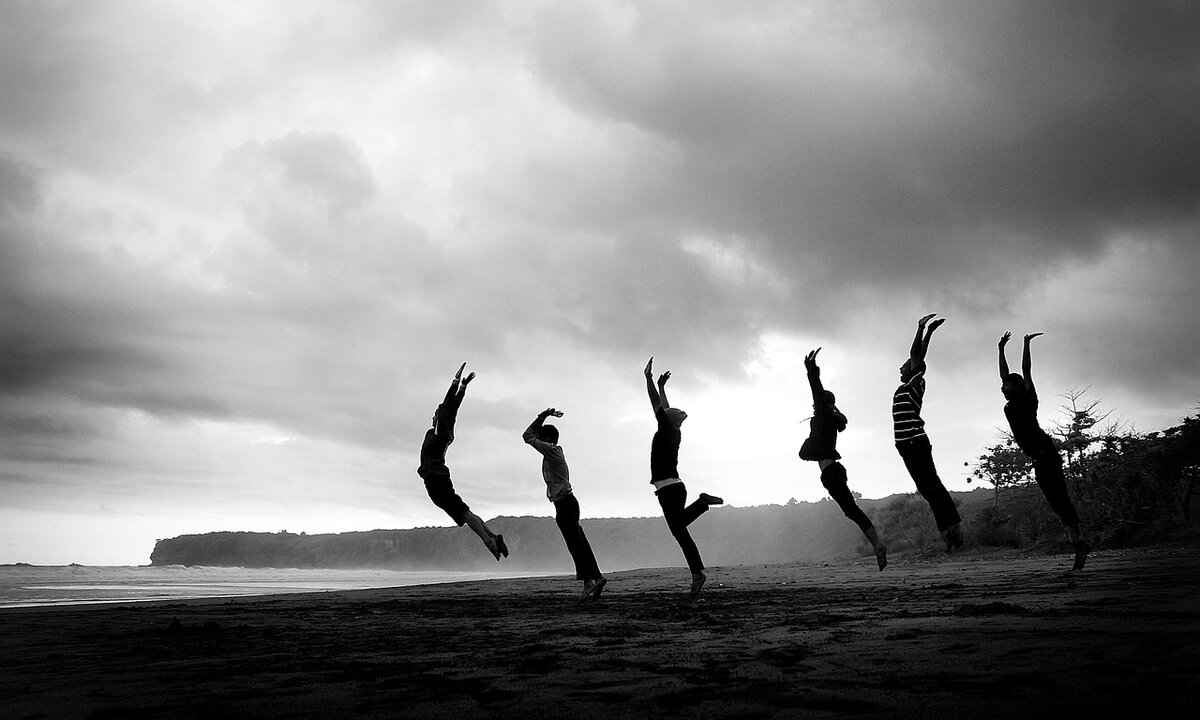
What is Image Stabilization and Why is it Important?
Image stabilization is a critical feature in modern action cameras, designed to enhance the quality of video footage by reducing blurriness and shaking. This technology is especially important for those who engage in high-energy activities such as biking, skiing, or surfing, where camera shake can significantly detract from the viewing experience. Understanding the importance of image stabilization can greatly assist you in selecting the right action camera tailored to your specific needs.
When capturing action-packed moments, the last thing you want is a shaky video that fails to convey the excitement of the experience. With the right image stabilization technology, you can achieve smooth and professional-quality footage that brings your adventures to life. Whether you are a casual user or a seasoned professional, investing in a camera with effective stabilization can make a world of difference.
There are primarily two types of image stabilization found in action cameras: Optical Image Stabilization (OIS) and Electronic Image Stabilization (EIS). Each method has its own advantages and disadvantages, making it essential to understand how they work to choose the best option for your filming needs.
- Optical Image Stabilization (OIS): This method uses physical components within the camera to counteract shaking. It typically involves moving the camera lens or sensor to maintain a stable image. OIS is highly effective but is often found in higher-end models due to its complexity.
- Electronic Image Stabilization (EIS): EIS relies on software algorithms to analyze the video footage and digitally stabilize it. This method is commonly used in action cameras because it is more compact and cost-effective, making it accessible to a wider audience.
Understanding the differences between OIS and EIS can help you make an informed decision when purchasing an action camera. For instance, if you plan to shoot in low-light conditions or require the highest image quality, OIS may be the better choice. Conversely, if you are looking for a lightweight and budget-friendly option, EIS might suit your needs perfectly.
Another factor to consider is the real-world performance of these stabilization technologies. Testing action cameras in various scenarios—like running, cycling, or even capturing fast-paced sports—can provide valuable insights into how well each model performs under pressure. User reviews and expert opinions are also excellent resources for gauging the effectiveness of image stabilization features.
To maximize the benefits of your action camera’s image stabilization, consider implementing proper mounting techniques. Using high-quality mounts can significantly reduce vibrations and improve stability during intense activities. Additionally, shooting in optimal lighting conditions can enhance the performance of stabilization technologies, resulting in clearer and smoother footage.
As technology continues to evolve, the future of image stabilization in action cameras looks promising. Emerging advancements in AI and machine learning are set to revolutionize how stabilization is implemented, potentially leading to even greater improvements in performance and user experience.
In summary, image stabilization is an essential feature for anyone looking to capture high-quality action footage. By understanding the types of stabilization available, evaluating real-world performance, and utilizing best practices for filming, you can ensure that your action camera delivers the smooth, professional results you desire.
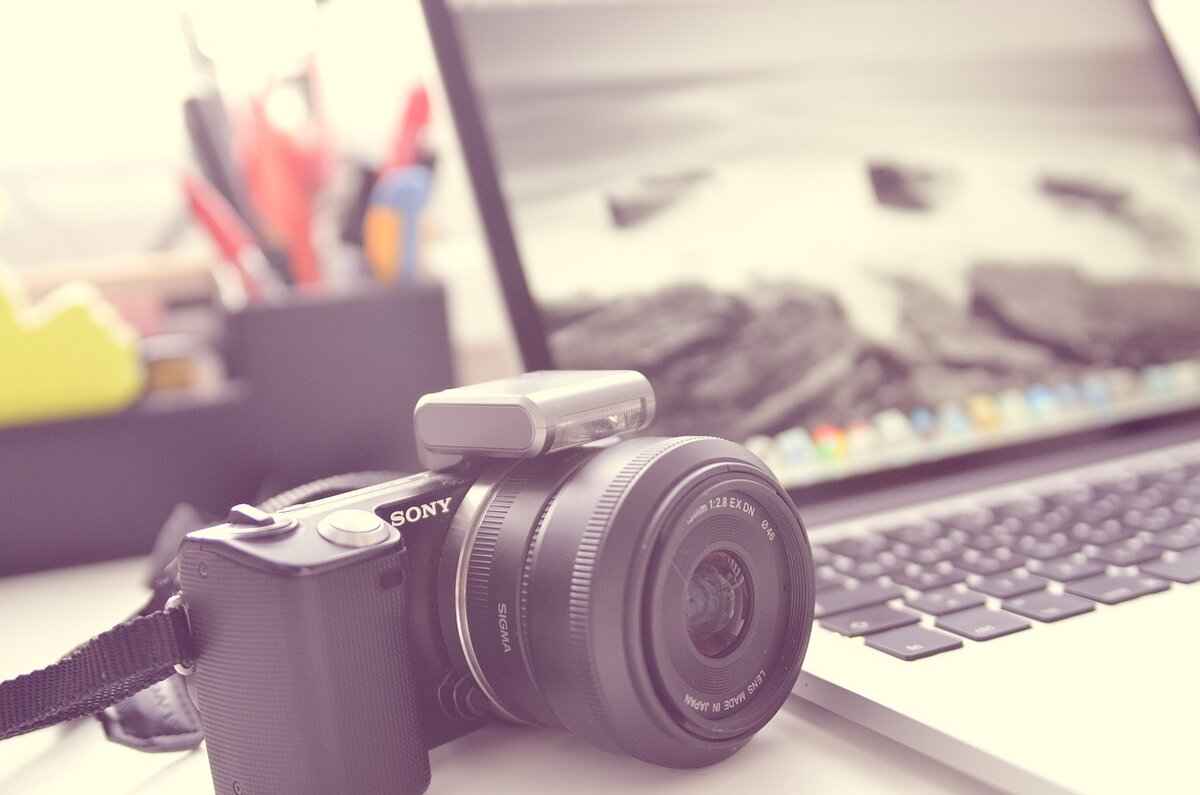
Types of Image Stabilization in Action Cameras
When it comes to capturing stunning footage during your adventures, image stabilization plays a crucial role in ensuring that your videos are smooth and visually appealing. Action cameras are designed to withstand the rigors of outdoor activities, but without proper stabilization, even the most exciting moments can turn into shaky, unusable clips. Understanding the different types of image stabilization available can significantly influence your choice of camera, allowing you to select the one that best meets your needs.
There are primarily two types of image stabilization used in action cameras: Optical Image Stabilization (OIS) and Electronic Image Stabilization (EIS). Each method has its own strengths and weaknesses, making it essential to understand how they work to make an informed decision.
Optical Image Stabilization is a hardware-based solution that compensates for camera shake by physically adjusting the lens elements. This method is particularly effective in challenging conditions, such as low-light environments, where maintaining image clarity is essential.
OIS works by using gyroscopic sensors to detect motion and then shifting the lens elements to counteract that movement. This results in sharper images and smoother videos, especially during fast-paced activities like biking or skiing.
- Superior Image Quality: OIS maintains high image quality, particularly in low-light situations.
- Reduced Blurriness: It effectively minimizes blurriness caused by camera shake.
- Ideal for Action Shots: Perfect for capturing dynamic movements without losing detail.
Electronic Image Stabilization is a software-based approach that analyzes video footage in real-time to reduce shake. This method is commonly found in many modern action cameras due to its compact design and affordability.
EIS works by cropping the video slightly and adjusting the frames to compensate for any detected movement. This allows for smoother transitions and a more stable viewing experience without the need for bulky hardware.
- Cost-Effective: EIS is generally more affordable than OIS, making it accessible to a wider range of users.
- Lightweight: The absence of complex hardware means EIS cameras are often lighter and more portable.
- Versatile: Effective in a variety of shooting conditions, making it ideal for casual users.
Choosing between OIS and EIS largely depends on your specific filming needs. If you frequently shoot in low-light conditions or engage in extreme sports, a camera with OIS may be the better option. On the other hand, if you’re looking for a lightweight, budget-friendly solution for everyday use, EIS-equipped cameras can deliver impressive results.
Ultimately, understanding the differences between these two types of stabilization can help you select the right action camera to enhance your filming experience and ensure that every adventure is captured beautifully.
Optical Image Stabilization (OIS)
is a cutting-edge technology that plays a crucial role in enhancing the quality of videos and images captured by action cameras. Unlike traditional stabilization methods, OIS utilizes hardware components to physically adjust the camera lens, providing a more effective solution for minimizing blurriness and shake during filming. This method is particularly advantageous for those who engage in high-speed activities, as it ensures that the footage remains stable and clear, even in the most dynamic environments.
One of the standout features of OIS is its ability to maintain image quality in low-light conditions. This is essential for adventurers who often find themselves shooting in challenging lighting scenarios, such as at dusk or indoors. By compensating for camera shake, OIS allows users to capture stunning visuals without the need for additional lighting equipment, making it ideal for night-time adventures or indoor shooting.
How does OIS work? The technology compensates for unwanted motion by moving specific lens elements in real-time to counteract any shake. This process results in smoother videos and sharper images, which is particularly beneficial for fast-paced activities like biking, skiing, or surfing. As a result, users can enjoy a more immersive viewing experience without the distraction of shaky footage.
While OIS is highly effective, it is worth noting that this technology is often found in higher-end models of action cameras. This is primarily due to the complexity and cost of the hardware components required for OIS to function effectively. However, for those serious about capturing high-quality footage, investing in a camera with OIS can be well worth it.
In addition to its effectiveness in low-light conditions, OIS also excels in reducing motion blur during fast movements. This is particularly important for action sports enthusiasts who need to capture every exhilarating moment without compromising on quality. The result is a more polished and professional-looking video that can impress viewers and enhance storytelling.
When comparing OIS to other stabilization methods, such as Electronic Image Stabilization (EIS), it is crucial to understand the differences. EIS relies on software algorithms to analyze and stabilize footage, which can sometimes lead to a slight crop of the image. While EIS is generally more affordable and lightweight, OIS offers superior performance in terms of image quality and stability, especially in challenging shooting conditions.
In conclusion, Optical Image Stabilization is an essential feature for anyone looking to capture high-quality action footage. Its ability to maintain clarity and smoothness in dynamic environments sets it apart from other stabilization techniques. As technology continues to advance, we can expect to see even more action cameras incorporating OIS, making it an increasingly popular choice among filmmakers and adventurers alike.
How OIS Works
Understanding how Optical Image Stabilization (OIS) works is crucial for anyone looking to capture high-quality images and videos, especially in dynamic environments. This technology plays a pivotal role in ensuring that your footage remains clear and steady, even when the camera experiences movement or vibrations.
What is OIS and How Does it Function? OIS is a mechanical stabilization system that compensates for camera shake by adjusting the position of the lens elements within the camera. This adjustment is achieved through tiny motors that move the lens in real-time, counteracting any unwanted motion. This process can significantly enhance the quality of your images and videos, making them appear smoother and more professional.
When you are engaging in fast-paced activities, such as biking, skiing, or even just walking, traditional cameras can capture shaky footage that detracts from the viewing experience. OIS addresses this issue by allowing the lens to shift in the opposite direction of the camera movement. For instance, if you are running and the camera shakes upward, the lens can tilt downward slightly to stabilize the image. This dynamic adjustment ensures that your footage remains clear and focused.
Benefits of OIS in Action Cameras
- Improved Image Clarity: By minimizing motion blur, OIS helps to produce sharper images, which is essential for capturing detailed moments during action-packed adventures.
- Smoother Video Quality: The stabilization provided by OIS results in fluid video playback, making it perfect for creating engaging content for social media or personal memories.
- Low-Light Performance: One of the standout advantages of OIS is its effectiveness in low-light conditions. By stabilizing the camera, OIS allows for longer exposure times without introducing blur, making it ideal for nighttime shooting.
While OIS is often found in higher-end models, its effectiveness makes it a worthwhile investment for serious photographers and videographers. The technology is particularly beneficial in scenarios where you cannot control the environment, such as during sports events or outdoor adventures.
Comparing OIS to Other Stabilization Methods
It’s essential to note that while OIS is highly effective, it is not the only option available. Electronic Image Stabilization (EIS) is another popular method that uses software to stabilize footage. While EIS can be more affordable and lighter, it may not match the performance of OIS in terms of image quality, especially in low-light settings.
In conclusion, understanding how OIS works and its benefits can significantly enhance your shooting experience. By investing in a camera with this technology, you can enjoy clearer images and smoother videos, allowing you to capture your adventures without the worry of shaky footage. Whether you are a professional or an enthusiast, OIS is a valuable feature that can elevate your photography and videography skills to new heights.
Advantages of OIS
When it comes to capturing stunning visuals, especially in challenging lighting conditions, Optical Image Stabilization (OIS) stands out as a game-changer. One of the most significant is its remarkable ability to maintain image quality during low-light scenarios. This feature is particularly beneficial for those who enjoy night-time adventures or indoor shooting where lighting can be suboptimal.
Unlike traditional stabilization methods, OIS utilizes a series of hardware components that physically adjust the camera’s lens. This mechanism allows the camera to counteract any unintended movements, resulting in sharper images and smoother video footage. The effectiveness of OIS becomes especially apparent when filming in dimly lit environments, where other stabilization methods may struggle to deliver clear results.
Another key benefit of OIS is its contribution to the overall user experience. By minimizing blurriness and shake, OIS enables photographers and videographers to focus more on their creative vision rather than worrying about technical limitations. This is particularly advantageous for action sports enthusiasts who often find themselves in dynamic situations where every second counts.
- Enhanced Night Photography: OIS allows for longer exposure times without the risk of motion blur, making it easier to capture stunning nightscapes.
- Improved Indoor Shooting: In environments where artificial lighting is the only option, OIS helps maintain clarity and detail in images.
- Versatile Shooting Options: The stabilization provided by OIS opens up various shooting styles, from handheld shots to more dynamic movements.
In addition to these advantages, OIS is often complemented by advanced software algorithms that further enhance video quality. This combination allows users to achieve professional-grade results without the need for bulky equipment. As technology continues to evolve, we can expect OIS to become even more refined, offering greater stability and versatility across a range of shooting conditions.
Moreover, OIS is not just limited to high-end cameras. Many mid-range and even some budget-friendly models are now incorporating this technology, making it accessible to a broader audience. This democratization of advanced stabilization techniques means that more creators can produce high-quality content, regardless of their budget.
As we look to the future, the integration of OIS into action cameras and smartphones is likely to expand. With the rise of social media and the increasing demand for high-quality visual content, manufacturers are investing heavily in stabilization technologies. This means that users can expect even more impressive features that will enhance their filming experience.
In conclusion, the are clear: it not only improves image quality in low-light conditions but also enhances the overall shooting experience. Whether you’re an amateur filmmaker or a seasoned professional, OIS provides the tools necessary to capture stunning visuals with ease. As this technology continues to advance, we can look forward to even more exciting possibilities in the realm of photography and videography.
Electronic Image Stabilization (EIS)
is a crucial technology in the realm of action cameras, designed to enhance the quality of video footage by minimizing unwanted shake and blur. As adventure enthusiasts and content creators seek to capture their experiences in the most dynamic environments, EIS has become a staple feature in many modern action cameras.
EIS utilizes software algorithms to analyze video footage in real-time, adjusting the image to compensate for camera movement. This process involves cropping the edges of the video frame slightly, which allows the camera to stabilize the image without the need for bulky mechanical components. The result is smoother, more professional-looking footage, even during high-action scenarios.
Action cameras are often subjected to intense motion, whether it’s during extreme sports, hiking, or even casual outings. EIS plays a pivotal role in ensuring that the captured footage remains clear and visually appealing. By reducing shake, EIS allows users to focus on the content of their videos rather than the distracting motion that can occur during filming.
- Compact Design: Unlike Optical Image Stabilization (OIS), which requires additional hardware, EIS is lightweight and can be integrated into smaller camera designs.
- Cost-Effectiveness: EIS technology is generally more affordable to implement than OIS, making it accessible for a broader range of action cameras.
- Real-Time Processing: EIS works in real-time, allowing users to see the stabilization effects immediately as they record, which is particularly beneficial for live streaming or vlogging.
Many users have found EIS to be invaluable in various scenarios. For instance, cyclists can capture their rides without the jarring vibrations that typically accompany fast movement. Similarly, runners can document their training sessions with clarity, enabling them to share their experiences on social media without compromising video quality.
Not all EIS systems are created equal. Different brands and models may implement EIS in unique ways, resulting in varying levels of effectiveness. When choosing an action camera, it’s essential to consider user reviews and expert opinions to gauge the performance of EIS in real-world conditions.
- Use Stable Mounts: Utilizing proper mounts can significantly enhance stabilization by reducing vibrations caused by external factors.
- Avoid Excessive Movement: While EIS is designed to compensate for shake, minimizing unnecessary movement can further improve video quality.
- Shoot in Good Lighting: Adequate lighting conditions can enhance the overall quality of your footage, allowing EIS to perform optimally.
As technology progresses, the future of EIS looks promising. Innovations in artificial intelligence and machine learning may lead to even more sophisticated stabilization methods that can adapt to various shooting conditions. This evolution will likely make action cameras more versatile, catering to an even wider array of filming scenarios.
In summary, Electronic Image Stabilization is a game-changer for action cameras, providing users with the ability to capture smooth, high-quality footage in dynamic situations. By understanding how EIS works and its significance, users can make informed choices when selecting their ideal action camera.
How EIS Works
Electronic Image Stabilization (EIS) is a game-changing technology in the world of action cameras, providing a solution for shaky footage that can ruin an otherwise spectacular shot. Understanding how EIS works is essential for anyone looking to capture smooth, professional-quality videos during their adventures.
EIS operates by utilizing advanced software algorithms to analyze the video footage in real-time. This process involves detecting motion and compensating for it by adjusting the image accordingly. Rather than relying on physical components to stabilize the shot, EIS makes calculated adjustments to the video frame, resulting in a significantly smoother viewing experience.
One of the key features of EIS is its ability to crop the image slightly to create a buffer zone around the edges. This cropping allows the software to remove any unwanted shake or jitter from the final video output. As a result, even during fast-paced activities, viewers can enjoy fluid transitions and stable footage without the need for cumbersome hardware.
Moreover, EIS is particularly advantageous for those who prioritize portability. Unlike Optical Image Stabilization (OIS), which often requires more complex mechanical systems, EIS can be integrated into compact action cameras without adding significant weight or size. This makes it an ideal choice for adventure seekers who need to keep their gear lightweight and easy to carry.
In addition to its compact design, EIS is generally more affordable compared to OIS. This cost-effectiveness opens up opportunities for a broader audience, allowing both amateur videographers and seasoned professionals to benefit from enhanced stabilization without breaking the bank. With the increasing popularity of vlogging and action sports, EIS has become a critical feature that many consumers look for when purchasing a new camera.
Furthermore, the effectiveness of EIS can vary based on the specific algorithms used by different manufacturers. Some brands may employ more sophisticated methods to analyze and stabilize footage, resulting in superior performance. Therefore, when selecting an action camera, it is essential to consider not only the presence of EIS but also the quality of its implementation.
As technology evolves, we can expect EIS to become even more refined. Future developments may include the integration of artificial intelligence to enhance stabilization further, allowing cameras to adapt to various shooting conditions automatically. This could lead to even smoother footage, making it easier for users to capture stunning videos without the need for extensive post-processing.
In conclusion, understanding how EIS works is crucial for anyone interested in capturing high-quality video content. By leveraging software algorithms to stabilize footage, EIS offers a lightweight, affordable solution that is perfect for action-packed environments. As technology continues to advance, the future of EIS looks promising, with potential improvements that could revolutionize the way we film our adventures.
Advantages of EIS
When it comes to capturing high-quality action footage, the choice between Electronic Image Stabilization (EIS) and Optical Image Stabilization (OIS) can significantly impact your experience. EIS has emerged as a popular option for both casual users and seasoned professionals, primarily due to its affordability and lightweight design. Let’s delve deeper into the and explore why it may be the ideal choice for your action camera needs.
One of the most compelling reasons to choose EIS is its cost-effectiveness. Unlike OIS, which relies on complex hardware components, EIS operates through software algorithms. This means that manufacturers can offer cameras equipped with EIS at a lower price point, making them accessible to a broader audience. Furthermore, the absence of bulky hardware makes EIS cameras significantly lighter, enhancing portability for users who are always on the go.
For adventurers and travelers, the lightweight nature of EIS-equipped cameras is a game-changer. Whether you’re hiking, biking, or engaging in extreme sports, having a camera that doesn’t weigh you down allows for more freedom and agility. This portability is especially beneficial for vloggers who need to capture spontaneous moments without the hassle of heavy equipment.
EIS technology processes video in real time, which means that it can instantly analyze and adjust the footage to minimize shake and blurriness. This results in smoother transitions and more stable video output, even in dynamic environments. Users can enjoy the peace of mind that their footage will look professional without needing extensive post-editing.
Another significant advantage of EIS is its adaptability. Unlike OIS, which may struggle in certain conditions, EIS performs well across a variety of scenarios, whether you’re shooting in bright sunlight or low-light environments. This versatility makes EIS a reliable choice for capturing action in diverse settings, ensuring that you don’t miss out on those crucial moments.
As technology advances, EIS is continually evolving. Many modern action cameras incorporate advanced features like AI-driven stabilization and machine learning algorithms that enhance the stabilization process. These developments allow EIS to not only stabilize footage but also improve overall image quality, making it a smart investment for anyone serious about videography.
For those who may not be tech-savvy, EIS offers a more user-friendly experience. With fewer mechanical parts involved, users are less likely to encounter issues related to hardware malfunctions. This simplicity allows users to focus on what matters most—capturing stunning footage without the worry of technical difficulties.
In summary, the advantages of Electronic Image Stabilization are clear. Its affordability, lightweight design, real-time processing capabilities, and adaptability make it an attractive option for both casual users and professionals. As camera technology continues to advance, EIS is poised to become even more sophisticated, solidifying its place as a leading choice for action cameras.
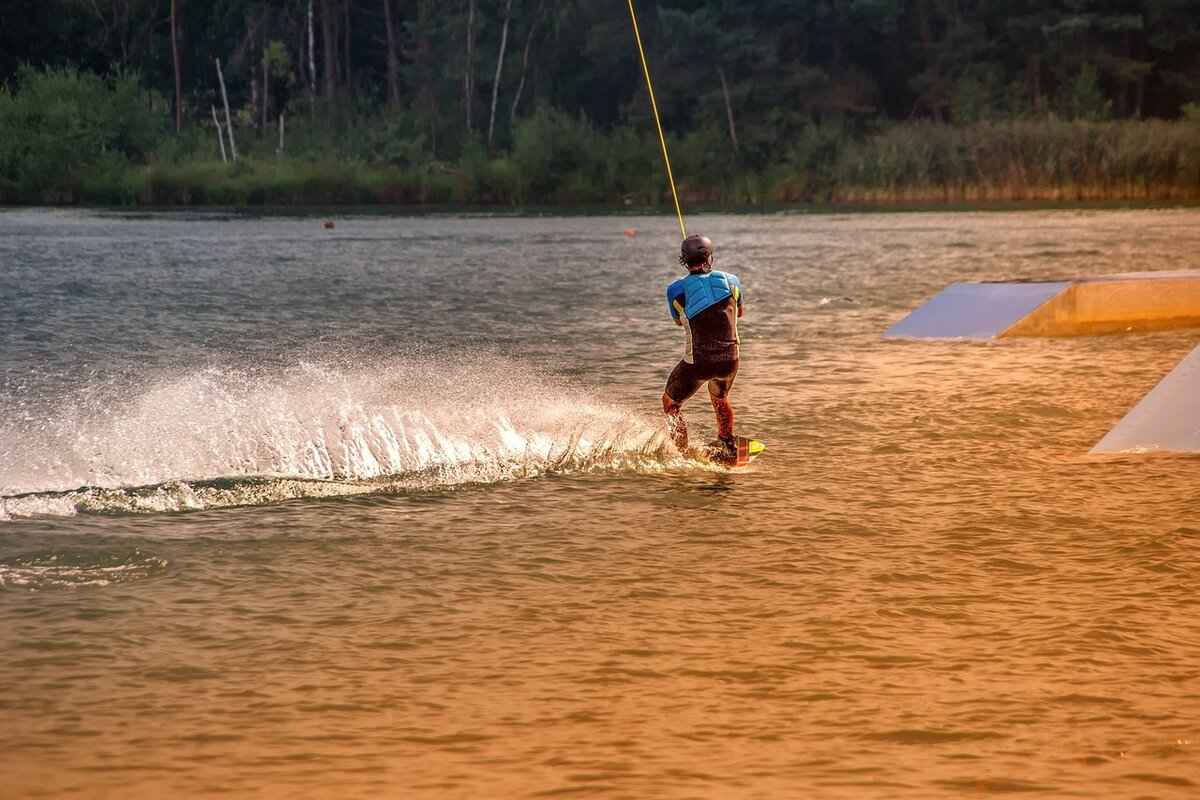
Top Action Cameras with Image Stabilization
In today’s fast-paced world of adventure and exploration, capturing high-quality footage is essential. Action cameras equipped with advanced image stabilization technology have become increasingly popular, ensuring that your videos remain smooth and professional, even during the most intense activities. In this article, we will delve into some of the best action cameras on the market that feature cutting-edge image stabilization, allowing you to document your adventures without the worry of shaky footage.
Why Choose an Action Camera with Image Stabilization?
When engaging in activities such as biking, surfing, or hiking, the last thing you want is a shaky video that fails to capture the excitement of the moment. Image stabilization is crucial because it:
- Reduces Blurriness: It minimizes the effects of camera shake, resulting in clearer images.
- Enhances Video Quality: Smooth footage is essential for professional-looking videos.
- Improves Viewer Experience: Viewers are more likely to engage with smooth, stable content.
Top Picks for Action Cameras with Image Stabilization
1. GoPro Hero 11 Black
The GoPro Hero 11 Black is a top contender in the action camera market, renowned for its exceptional electronic image stabilization (EIS) capabilities. This camera features HyperSmooth technology, which ensures that your footage remains steady, regardless of the intensity of your activities. With its rugged design and waterproof capabilities, it is perfect for outdoor enthusiasts.
2. DJI Osmo Action 3
The DJI Osmo Action 3 stands out with its dual-screen design and advanced stabilization features. This camera is ideal for vloggers and content creators who want to capture dynamic angles while maintaining smooth footage. Its RockSteady stabilization technology ensures that your videos are free from jitters, making it a favorite among creators.
3. Insta360 ONE R
The Insta360 ONE R offers a unique modular design that allows users to switch between a 360-degree lens and a standard action camera lens. Its FlowState stabilization technology ensures that all footage is smooth, no matter how you choose to shoot. This versatility makes it a great choice for those who want to experiment with different filming styles.
4. Sony FDR-X3000
Known for its Optical SteadyShot technology, the Sony FDR-X3000 provides excellent stabilization, making it ideal for capturing high-speed action. Its compact design and high-quality lens make it a reliable option for both amateur and professional videographers.
5. Akaso Brave 8
The Akaso Brave 8 is a budget-friendly option that does not compromise on stabilization quality. With its EIS feature, it offers smooth footage at an affordable price, making it perfect for casual users who want to capture their adventures without breaking the bank.
Comparative Insights
When choosing an action camera, it’s essential to consider factors such as stabilization performance, user reviews, and specific features that cater to your filming needs. Testing various models in real-world scenarios—like biking or skiing—can provide insight into their stabilization capabilities.
Maximizing Your Action Camera’s Stabilization
To get the best results from your action camera’s image stabilization, consider the following tips:
- Use Quality Mounts: Proper mounting can significantly reduce vibrations.
- Optimize Shooting Conditions: Good lighting and minimal movement help stabilization work effectively.
With the right action camera, you can ensure that your footage is not only high-quality but also captivating. These top picks offer advanced image stabilization technology that caters to various needs and budgets, making them essential tools for any adventure enthusiast.
GoPro Hero 11 Black
The stands out in the action camera market, particularly for its remarkable Electronic Image Stabilization (EIS) capabilities. This feature has made it a top choice among adventure enthusiasts, vloggers, and content creators who require smooth and professional-quality footage.
One of the most significant advantages of the GoPro Hero 11 Black is its ability to deliver exceptional stabilization in various environments. Whether you’re skiing down a mountain, cycling through rugged terrain, or capturing your underwater adventures, the EIS technology ensures that your footage remains stable and visually appealing.
The EIS in the GoPro Hero 11 Black utilizes sophisticated software algorithms to analyze your footage in real-time. By cropping the edges of the video slightly, it compensates for any shake or vibration, resulting in smooth transitions and clear visuals. This technology is especially beneficial for action-packed scenarios, where traditional stabilization methods may falter.
- Adventure Sports: Capture exhilarating moments while surfing, snowboarding, or mountain biking without worrying about shaky footage.
- Travel Vlogging: Create stunning travel videos that showcase your adventures with clarity and professionalism.
- Underwater Filming: The Hero 11 Black is waterproof and can handle underwater conditions while maintaining excellent stabilization.
When comparing the GoPro Hero 11 Black to other action cameras, such as the DJI Osmo Action 3, it becomes clear that the EIS technology in the Hero 11 Black is superior. Many users report that the stabilization is more effective, resulting in smoother footage even in the most challenging conditions.
Many users have praised the GoPro Hero 11 Black for its user-friendly interface and high-quality video output. Reviews highlight the camera’s ability to produce stunning 5.3K video at 60fps, which, combined with its EIS, results in professional-grade content with minimal effort.
To get the best results from the GoPro Hero 11 Black’s EIS, consider the following tips:
- Use Proper Mounts: Secure your camera with appropriate mounts to reduce vibrations further.
- Maintain a Steady Hand: While the EIS is effective, a steady hand can enhance the overall quality of your footage.
- Optimize Shooting Conditions: Shooting in well-lit environments can improve video quality and stabilization effectiveness.
As technology continues to evolve, we can expect future models of the GoPro Hero series to incorporate even more advanced stabilization features. Innovations in artificial intelligence and machine learning may lead to further enhancements in EIS, making it even more effective for capturing dynamic action.
In summary, the GoPro Hero 11 Black’s exceptional EIS capabilities make it a standout choice for anyone looking to capture high-quality, stable footage during their adventures. Its combination of advanced technology, user-friendly features, and versatile applications solidifies its position as a leader in the action camera market.
DJI Osmo Action 3
The stands out in the realm of action cameras, particularly for those who seek versatility and high-quality footage. This cutting-edge device is equipped with dual screens, allowing users to frame their shots perfectly, whether they are filming themselves or capturing stunning landscapes. The front-facing screen is especially beneficial for vloggers and content creators who wish to engage their audience with dynamic angles.
The DJI Osmo Action 3 is designed with a focus on stabilization technology that ensures smooth video capture, even in the most challenging environments. This feature is crucial for adventurers who engage in high-octane activities, such as mountain biking, surfing, or skiing. With its RockSteady 3.0 stabilization, the camera effectively reduces shake and blurriness, resulting in professional-quality footage that captures every thrilling moment.
- Dual-Screen Setup: The front screen allows for easy self-framing, while the rear screen provides a vibrant display for reviewing shots.
- Exceptional Stabilization: RockSteady 3.0 technology ensures smooth video, even during rapid movements.
- Waterproof Design: The camera is built to withstand harsh conditions, making it ideal for outdoor adventures.
- 4K Video Recording: Capture stunning 4K footage at 120fps, perfect for slow-motion effects.
The RockSteady stabilization technology operates by utilizing advanced algorithms that analyze the video feed in real-time. This process allows the camera to crop the image slightly to counteract any unwanted movements. As a result, users can enjoy smooth transitions and clear visuals without the need for bulky stabilization equipment.
The DJI Osmo Action 3 is perfect for a variety of users, including:
- Adventure Enthusiasts: Whether you’re hiking, biking, or engaging in water sports, this camera can handle it all.
- Vloggers: The dual-screen feature is a game-changer for content creators who want to engage their audience more effectively.
- Travelers: Compact and lightweight, it’s easy to carry around while capturing memories on the go.
When placed alongside competitors like the GoPro Hero 11 Black, the DJI Osmo Action 3 holds its ground with similar features but stands out with its user-friendly interface and affordability. Each camera has its pros and cons, but the Osmo Action 3’s unique combination of features makes it a compelling choice for many users.
In real-world scenarios, users have reported excellent performance from the DJI Osmo Action 3. Whether filming during a high-speed chase or capturing serene moments in nature, the camera consistently delivers stunning results. Its ability to perform well in varying light conditions makes it a reliable companion for any adventure.
In summary, the DJI Osmo Action 3 is a powerful tool for anyone looking to capture their adventures in stunning detail. With its dual screens, impressive stabilization technology, and rugged design, it is well-suited for both casual users and serious filmmakers alike.
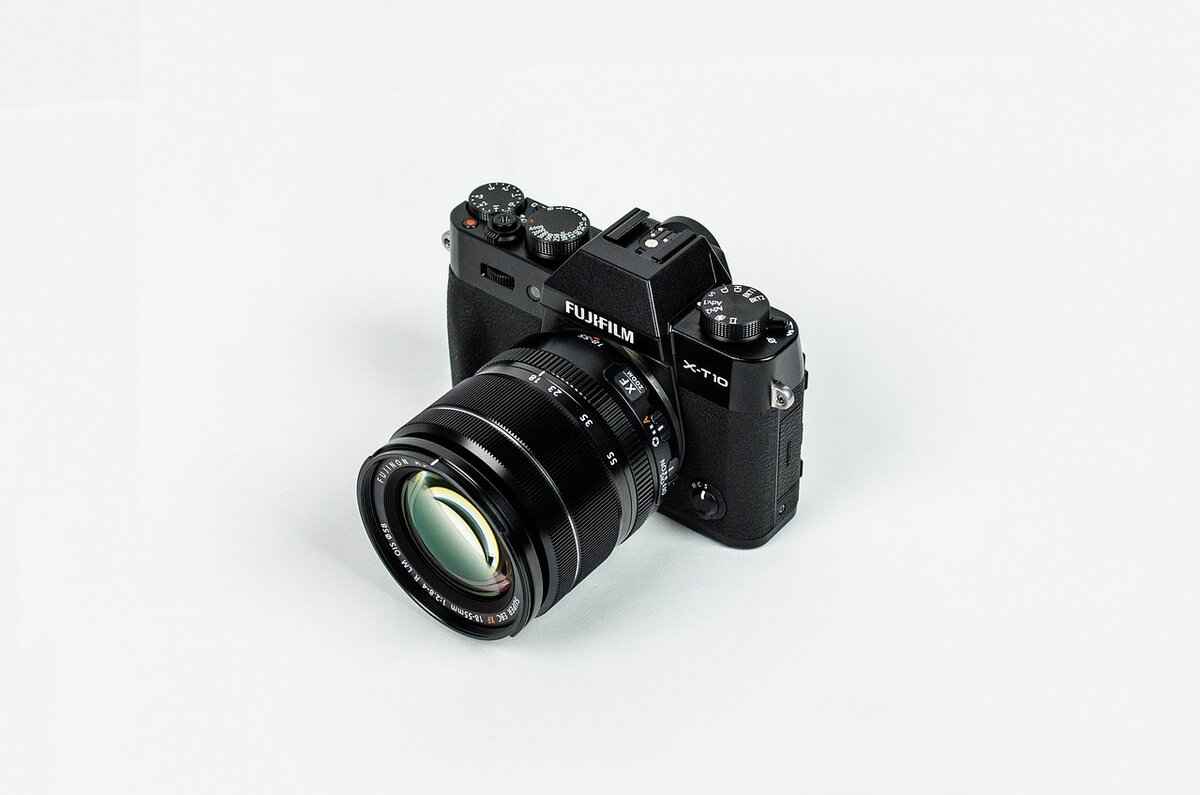
Comparing Image Stabilization Performance
When it comes to capturing high-octane adventures, the importance of image stabilization in action cameras cannot be overstated. across various models allows you to make an informed decision that aligns with your specific needs. Let’s delve into the nuances of stabilization technology and how it impacts your filming experience.
Understanding the differences in stabilization performance can help you choose the right action camera. Does the camera effectively reduce shake during fast movements? This question is fundamental when evaluating options. Different cameras utilize various stabilization technologies, and knowing how they perform can save you from potential disappointment.
- Type of Stabilization: As mentioned previously, there are two main types: Optical Image Stabilization (OIS) and Electronic Image Stabilization (EIS). Each has its strengths and weaknesses.
- Real-World Performance: Look for tests that showcase how well a camera performs in dynamic situations, such as biking or skiing.
- User Feedback: Reviews from actual users can provide insights into how a camera’s stabilization holds up over time.
To truly gauge the effectiveness of image stabilization, it’s essential to conduct real-world tests. For instance, when cycling, assess how well the camera handles bumps and vibrations. Does the footage remain smooth? Similarly, running or surfing can provide different challenges for stabilization technologies. Look for videos that showcase these scenarios to see how each model performs.
Experts often conduct thorough reviews and comparisons of action cameras. They focus on not just the specifications but also the user experience. Many professionals recommend looking for models that offer adjustable stabilization settings, allowing users to customize their filming experience based on the activity.
When selecting an action camera, consider your primary use case. If you plan on filming extreme sports, a camera with advanced EIS may be more suitable. On the other hand, if you’re filming in low-light conditions, OIS might be the better option. What do you prioritize more: portability or image quality? This question can guide your choice significantly.
- Use Proper Mounts: The right mounting equipment can significantly enhance stabilization by minimizing vibrations.
- Shooting Technique: Employ smooth movements while filming. Quick jerks can negate the benefits of stabilization technology.
- Lighting Conditions: Good lighting can improve the overall quality of your footage, making stabilization more effective.
As technology advances, the future of image stabilization in action cameras looks promising. Emerging technologies, such as AI-driven stabilization, are expected to revolutionize how we capture action-packed moments. Will future models offer even more seamless stabilization? Industry experts believe that the next generation of action cameras will incorporate sophisticated algorithms, making them even more versatile.
In summary, comparing image stabilization performance across different action camera models is essential for anyone serious about capturing high-quality footage. By considering factors like real-world performance, expert insights, and user feedback, you can make a well-informed choice that meets your filming needs.
Real-World Testing Scenarios
When it comes to action cameras, play a crucial role in evaluating their performance, particularly regarding image stabilization features. Whether you are cycling down a rugged trail, running through a park, or catching waves while surfing, the effectiveness of an action camera’s stabilization technology can significantly impact the quality of your footage.
Testing action cameras in various environments allows users to determine how well these devices cope with different motion dynamics and external conditions. Real-world scenarios provide insights that controlled laboratory tests may not reveal, such as how well stabilization works during sudden movements or on uneven surfaces.
Cycling poses unique challenges for action cameras. The vibrations from the bike, combined with the speed of travel, can create a shaky video experience. During testing, cyclists can assess how the camera handles these vibrations. Cameras with advanced Electronic Image Stabilization (EIS) can smooth out the bumps, keeping the footage visually appealing.
- Mounting Position: The camera’s position on the bike can affect stabilization. Testing different mounts can help identify the best setup.
- Terrain Variability: Riding on smooth pavement versus rocky trails can showcase the camera’s adaptability.
Running is another activity where stabilization is put to the test. The up-and-down motion can lead to significant shaking, making it difficult to capture steady footage. Action cameras designed with robust stabilization features can help maintain clarity.
- Foot Strike Impact: The impact of each foot strike can introduce vibrations. Testing how well the camera compensates for this can reveal its strengths and weaknesses.
- Breathing Patterns: The natural movement of the body while running can also affect video quality. Evaluating footage can help identify how well the camera manages these movements.
Surfing presents a unique challenge due to the unpredictable nature of water and waves. The constant movement can lead to shaky footage if the camera lacks effective stabilization. Testing in this environment can highlight how well the camera performs under extreme conditions.
- Wave Impact: The force of waves can jostle the camera, making it essential to see how well it stabilizes footage during turbulent conditions.
- Water Movement: Capturing footage while paddling can also test the camera’s ability to maintain a steady shot amidst the chaos of the ocean.
By conducting these tests across different activities, users can create a comparative analysis of how various cameras perform. Each camera’s strengths and weaknesses can be documented, providing valuable insights to potential buyers. User reviews and expert opinions can further enrich this analysis, offering a well-rounded perspective on stabilization performance.
In conclusion, testing action cameras in real-world scenarios such as cycling, running, and surfing is essential for understanding their stabilization capabilities. By evaluating how different cameras perform in these diverse environments, users can make informed decisions when selecting the right action camera for their adventures.
User Reviews and Expert Opinions
When it comes to selecting the best action camera, user reviews and expert opinions play a crucial role in understanding the real-world performance of image stabilization features. These insights can provide potential buyers with a clear perspective on how well a camera performs under various conditions.
User reviews are invaluable as they reflect the experiences of individuals who have used the product in everyday situations. They can highlight both strengths and weaknesses that may not be evident in promotional materials. For instance:
- Authentic Feedback: Users often provide detailed accounts of their experiences, discussing how image stabilization performed during specific activities like biking or skiing.
- Real-World Scenarios: Reviews often mention how the camera handles different lighting conditions and movement, giving potential buyers a clearer picture of its capabilities.
- Comparative Insights: Many users compare their experiences with different models, which can help others make informed decisions.
Expert reviews, typically conducted by tech reviewers and industry professionals, offer a more analytical view of action cameras. They often include:
- Technical Analysis: Experts delve into the technical specifications and performance metrics, helping to clarify how image stabilization technologies like OIS and EIS stack up against each other.
- Field Tests: Many experts conduct rigorous tests in controlled environments, evaluating how stabilization performs under challenging conditions, such as high-speed movement or rough terrains.
- Comparative Reviews: Experts often compare multiple products side-by-side, providing a comprehensive view of the market and highlighting which cameras excel in stabilization.
When reading reviews, both user and expert, consider the following aspects:
- Video Quality: Look for comments on the clarity and smoothness of the footage captured, especially during dynamic activities.
- Ease of Use: Insights into how user-friendly the camera is can be vital, especially for those new to action cameras.
- Durability: Action cameras are often exposed to tough conditions; reviews that mention durability can help assess long-term value.
To gather comprehensive insights, it’s essential to consult a variety of sources:
- Online Retailers: Websites like Amazon and Best Buy often feature user reviews that can give you a sense of customer satisfaction.
- Tech Review Sites: Websites such as CNET, TechRadar, and Digital Trends provide expert reviews and comparisons.
- YouTube Channels: Many tech reviewers share in-depth video reviews, showcasing the performance of action cameras in real-time.
In conclusion, reading user reviews and expert opinions is essential for anyone looking to invest in an action camera with effective image stabilization. These insights not only help you understand the strengths and weaknesses of various models but also guide you in making a choice that aligns with your specific needs and filming style.
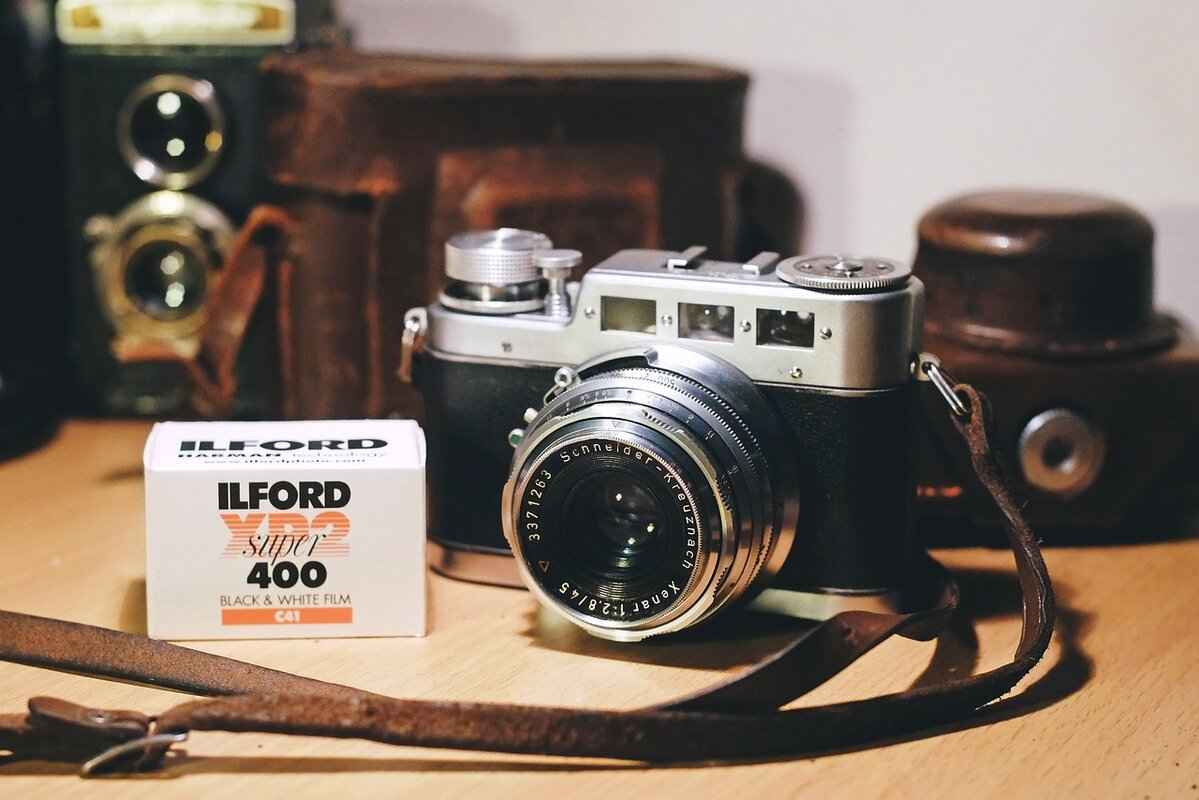
Tips for Maximizing Image Stabilization
When it comes to capturing stunning action shots, image stabilization is a game changer. To get the best results from your action camera’s image stabilization, consider these practical tips that can enhance your filming experience.
Before heading out on your adventure, take the time to familiarize yourself with your camera’s stabilization settings. Different models may offer various stabilization modes such as standard, high, or boosted stabilization. Understanding these options can help you choose the best setting for the specific activity you are filming.
- Secure Mounts: Ensure your camera is mounted securely to minimize vibrations. Use chest mounts or helmet mounts for a stable perspective.
- Tripods and Gimbals: For stationary shots, consider using a tripod or a gimbal. These tools help maintain stability, especially in windy or uneven terrain.
Lighting plays a crucial role in the effectiveness of image stabilization. Shooting in good lighting conditions allows your camera to capture clearer images, making stabilization more effective. Avoid shooting in low-light situations whenever possible, as this can lead to increased noise and reduced stabilization performance.
While your camera may have advanced stabilization technology, your movements matter. Try to move smoothly and avoid sudden jerks or rapid changes in direction. This is particularly important when filming fast-paced activities like biking or skiing. Fluid movements help the camera’s stabilization technology work more effectively.
Higher frame rates can lead to smoother footage, especially during fast action. If your camera allows it, consider shooting at a higher frame rate while keeping the resolution in mind. A balance between resolution and frame rate can enhance the overall quality of your footage.
If you find your footage is still shaky after filming, don’t despair. Many video editing software options offer post-production stabilization features. Programs like Adobe Premiere Pro and Final Cut Pro have tools that can help smooth out any remaining shakes, giving your footage a polished look.
Keep your action camera updated with the latest firmware. Manufacturers often release updates that improve performance, including image stabilization features. Regular maintenance, such as cleaning the lens and ensuring that mounts are in good condition, can also help maintain the quality of your footage.
Don’t hesitate to share your footage with others—friends, family, or online communities. Feedback can provide valuable insights into how you can improve your filming techniques. Additionally, watching tutorials or reading articles from experienced filmmakers can offer new perspectives and tips on maximizing your camera’s capabilities.
By following these tips, you can significantly enhance your filming experience and ensure that your action camera captures smooth, high-quality footage, no matter the adventure.
Proper Mounting Techniques
When capturing thrilling moments during action-packed activities, the significance of proper mounting techniques cannot be overstated. Using the right mounts can significantly enhance stabilization by reducing vibrations and ensuring a steady shot. This is crucial for achieving high-quality footage that resonates with viewers, whether you’re filming a mountain bike descent or a surf session.
Proper mounting techniques play a critical role in the overall performance of your action camera. The stability of your footage directly correlates with how securely and effectively your camera is mounted. A well-mounted camera minimizes unwanted shake and jitter, resulting in smoother, more professional-looking videos. Here are some reasons why proper mounts matter:
- Vibration Reduction: Correct mounts absorb shocks and vibrations, ensuring that the camera remains steady during fast movements.
- Versatility: Different mounts allow for various shooting angles, enhancing creativity and storytelling in your videos.
- Safety: A securely mounted camera reduces the risk of damage during intense activities.
Understanding the different types of mounts available can help you choose the right one for your specific needs. Here are some popular options:
- Helmet Mounts: Ideal for activities like biking or skiing, helmet mounts provide a first-person perspective while keeping the camera secure.
- Chest Mounts: These offer a unique angle that captures the rider’s movements and surroundings, perfect for action sports.
- Handlebar Mounts: Great for cyclists, these mounts stabilize the camera while allowing for easy access to controls.
- Tripod Mounts: For static shots, tripod mounts provide the ultimate stability, perfect for time-lapses or scenic views.
Choosing the right mount depends on various factors, including the type of activity and the desired angle. Here are some tips:
- Activity Type: Consider the nature of the activity. For high-impact sports, opt for mounts designed to absorb shock.
- Camera Compatibility: Ensure the mount is compatible with your specific action camera model.
- Ease of Use: Look for mounts that are easy to attach and detach, allowing for quick adjustments during filming.
To maximize the effectiveness of your mounts, follow these best practices:
- Secure Installation: Always double-check that your camera is securely attached to the mount before starting your activity.
- Test Before Use: Conduct a quick test run to evaluate the mount’s stability and make adjustments as necessary.
- Avoid Over-tightening: While it’s important to secure your camera, over-tightening can lead to damage.
In the world of action cameras, using the right mounts is essential for capturing stunning, stable footage. By understanding the various mounting options and implementing best practices, you can ensure that your action camera performs at its best, allowing you to focus on the experience rather than worrying about shaky footage. Proper mounting techniques not only enhance the quality of your videos but also contribute to a more enjoyable filming experience.
Optimal Shooting Conditions
When it comes to capturing stunning footage with your action camera, play a crucial role. By understanding how to leverage light and minimize movement, you can significantly enhance the effectiveness of your camera’s stabilization technology. This not only results in smoother footage but also improves the overall quality of your videos.
Good lighting is essential for any form of photography or videography, and action cameras are no exception. When shooting in well-lit environments, your camera can capture more detail and produce clearer images. In contrast, poor lighting can lead to grainy footage, which can exacerbate any shaking or instability.
- Utilize Natural Light: Whenever possible, shoot during the golden hours—early morning or late afternoon—when the sunlight is softer and more flattering.
- Avoid Harsh Shadows: Direct sunlight can create harsh shadows that may distract from your subject. Look for shaded areas or use reflectors to diffuse the light.
- Consider Your Environment: Choose locations that provide ample light, such as open fields or near water bodies, which can reflect light beautifully.
Excessive movement can hinder your camera’s stabilization capabilities. Here are some practical ways to minimize unwanted motion:
- Use Tripods or Stabilizers: When possible, employ a tripod or a gimbal to keep your camera steady.
- Plan Your Shots: Before filming, visualize your movements. Smooth, deliberate actions will yield better results than erratic movements.
- Practice Good Body Mechanics: Bend your knees slightly and keep your body stable while moving. This technique can help absorb shocks and vibrations.
By integrating both good lighting and minimized movement, you can maximize the performance of your action camera’s stabilization technology. This combination not only enhances the visual appeal of your footage but also allows for more professional-looking results. Remember, even the best stabilization features can struggle if the shooting conditions are not optimal.
In conclusion, understanding the significance of is vital for anyone looking to capture high-quality footage with an action camera. By focusing on good lighting and minimizing excessive movement, you can ensure that your camera’s stabilization technology performs at its best, resulting in smoother and more captivating footage. With these tips in mind, you’re well on your way to becoming a more proficient action videographer.

Future Trends in Action Camera Stabilization
As technology continues to advance at a rapid pace, the future of image stabilization in action cameras is poised for remarkable evolution. This evolution is expected to lead to even more impressive filming capabilities, allowing users to capture stunning footage in dynamic environments. In this section, we will explore the anticipated trends and innovations in image stabilization technology.
One of the most exciting prospects for the future of image stabilization is the integration of artificial intelligence (AI) and machine learning. These technologies are already making waves in various fields, and their application in action cameras could revolutionize the way stabilization is implemented. AI algorithms can analyze movement patterns and adjust stabilization settings in real-time, resulting in smoother footage even in the most chaotic situations.
- Real-Time Adjustments: AI can analyze the environment and make instantaneous adjustments to stabilization settings, ensuring optimal performance regardless of conditions.
- Predictive Stabilization: By learning from previous footage, AI can anticipate movements and compensate for them before they occur, leading to even smoother results.
- Content-Aware Stabilization: AI can differentiate between various types of motion, allowing for tailored stabilization that enhances specific elements in the frame while minimizing unwanted shakes.
Industry experts predict that future action cameras will incorporate increasingly sophisticated stabilization methods. These advancements are expected to make cameras more versatile, catering to a broader range of shooting scenarios. With the rise of vlogging and adventure sports, manufacturers are likely to prioritize stabilization features that cater to these markets.
User reviews and feedback will continue to play a crucial role in the development of stabilization technologies. Manufacturers are increasingly relying on consumer insights to refine their products. This feedback loop ensures that future models address real-world concerns, enhancing user experience and satisfaction.
We may also witness collaborations between action camera brands and tech companies specializing in image processing and stabilization. Such partnerships could lead to groundbreaking innovations that push the boundaries of what is currently possible in action camera technology.
The advancements in image stabilization will significantly benefit content creators, allowing them to focus on storytelling rather than technical limitations. With improved stabilization, creators can experiment with more dynamic shots, capturing the essence of their adventures without the worry of shaky footage.
As we look toward the future, it is clear that the evolution of image stabilization in action cameras will open up new avenues for creativity and storytelling. With the integration of AI, user feedback, and collaborations between brands, the next generation of action cameras promises to deliver unparalleled filming capabilities. Whether you are a professional filmmaker or an adventurous vlogger, the future of action camera stabilization is bright and full of potential.
Emerging Technologies
As technology continues to evolve, the realm of action cameras is experiencing a significant transformation, particularly in the area of image stabilization. One of the most exciting advancements is the integration of artificial intelligence (AI) and machine learning (ML)
AI and ML algorithms have the potential to analyze video footage in real-time, allowing for more precise adjustments to be made during recording. This means that the camera can intelligently recognize various types of motion, from quick jolts to subtle shakes, and apply the appropriate stabilization technique. By understanding the context of the footage, these technologies can dramatically reduce the occurrence of shaky footage that often plagues action shots. The integration of AI and ML into image stabilization involves a combination of data analysis and predictive modeling. By analyzing patterns within the footage, these technologies can anticipate the type of movement the camera is experiencing. For example, if a user is skiing down a slope, the system can predict the likely bumps and adjust the stabilization settings accordingly. This level of sophistication allows for smoother transitions and a more professional-looking final product. As the capabilities of AI and ML continue to expand, we can expect to see even more innovative solutions for image stabilization in action cameras. Future models may feature: Industry experts believe that the integration of AI and ML will not only improve stabilization but also enhance overall camera functionality. As manufacturers continue to innovate, we can anticipate: In summary, the future of image stabilization in action cameras is bright, thanks to the promising advancements in AI and machine learning. These technologies not only enhance stabilization performance but also improve the overall user experience, making it easier than ever to capture stunning, shake-free footage in any environment.
Market Predictions
As the demand for high-quality video content continues to rise, industry experts are closely monitoring the evolution of action cameras. One of the most exciting advancements on the horizon is the integration of more sophisticated stabilization methods. This development is set to enhance the versatility of action cameras across a multitude of shooting scenarios.
The importance of improved stabilization cannot be overstated. In an era where content creators aim for professional-grade footage, the ability to capture smooth, shake-free videos is essential. Enhanced stabilization methods will not only improve the quality of action shots but also broaden the range of environments in which these cameras can be effectively used, from extreme sports to everyday adventures.
Experts predict several exciting trends in the stabilization technology of future action cameras:
- AI-Driven Stabilization: The incorporation of artificial intelligence is expected to revolutionize video stabilization. By analyzing footage in real-time, AI algorithms can make dynamic adjustments to counteract movement, resulting in even smoother video capture.
- Multi-Axis Stabilization: Future models may feature advanced multi-axis stabilization systems that provide enhanced control over camera movements. This will allow for smoother transitions even during rapid motions and unpredictable conditions.
- Integration with Other Technologies: As action cameras become more integrated with other devices, such as drones and smartphones, the stabilization technology will likely evolve to work seamlessly across platforms, enhancing the overall user experience.
The anticipated advancements in stabilization will have a significant impact on content creation:
- Increased Accessibility: As stabilization technology becomes more advanced and user-friendly, it will encourage more individuals to engage in content creation, regardless of their skill level.
- New Creative Possibilities: Filmmakers will be able to experiment with a wider range of shooting techniques, including dynamic movement and complex angles, without the fear of shaky footage ruining their work.
- Professional Applications: Industries such as sports broadcasting, real estate, and travel vlogging will benefit immensely from enhanced stabilization, leading to higher production values and more engaging content.
As consumers prepare for the next generation of action cameras, they should consider the following features:
- Real-Time Performance: Look for cameras that offer real-time stabilization feedback, allowing users to adjust settings on the fly.
- Durability: Enhanced stabilization should not compromise the ruggedness and durability that action cameras are known for, especially in extreme conditions.
- User-Friendly Interfaces: As technology becomes more sophisticated, intuitive interfaces will be crucial for users to maximize the capabilities of their cameras.
In conclusion, the future of action cameras is bright, with enhanced stabilization methods poised to transform the way we capture and share our adventures. As these developments unfold, both amateur and professional content creators will find new opportunities to tell their stories through smooth, high-quality footage.
Frequently Asked Questions
- What is image stabilization in action cameras?
Image stabilization is a technology that helps reduce blurriness and shaking in videos, ensuring your footage remains smooth even during intense activities. It’s crucial for capturing high-quality content without the distraction of shaky visuals.
- What are the different types of image stabilization?
There are primarily two types of image stabilization in action cameras: Optical Image Stabilization (OIS) and Electronic Image Stabilization (EIS). OIS uses hardware to physically adjust the lens, while EIS relies on software algorithms to stabilize the footage digitally.
- Which action cameras offer the best image stabilization?
Some of the top action cameras known for their excellent image stabilization include the GoPro Hero 11 Black and the DJI Osmo Action 3. These models are designed to deliver smooth and professional-quality footage, making them favorites among adventurers and content creators.
- How can I maximize the effectiveness of my camera’s stabilization?
To get the best results, use proper mounting techniques to minimize vibrations and shoot in optimal lighting conditions. Avoid excessive movement during filming to allow the camera’s stabilization technology to work effectively.
- What future trends can we expect in action camera stabilization?
As technology progresses, we can anticipate more advanced stabilization methods, potentially incorporating AI and machine learning, which will enhance performance and user experience in future action cameras.














